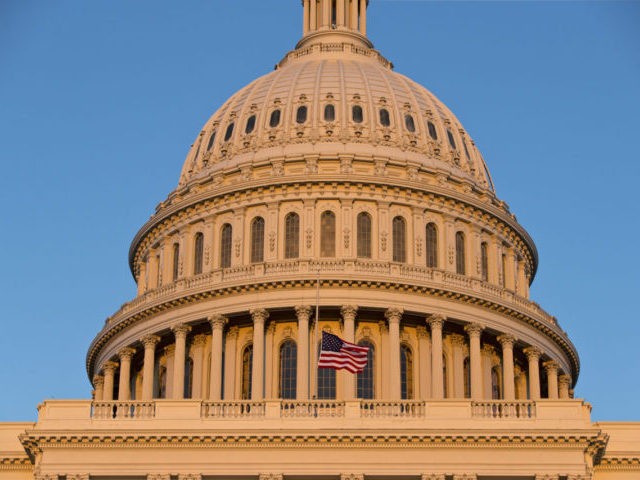The Senate tax bill would significantly expand the economy over the next ten years and lead to deficits nearly 30 percent lower than earlier estimated, according to an analysis of the bill released by the Joint Committee on Taxation Thursday.
More robust economic growth would partially offset the estimated $1.414 trillion revenue losses from tax cuts by about $458 billion. As a result, the budget deficit added by tax cuts would be $1 trillion.
While that means the GOP tax cuts will not “pay for themselves,” few on Capitol Hill expected the JCT to say they would. In fact, the JCT economic models do not allow for large tax cuts to pay for themselves. The projected deficit numbers are in-line or lower than many expected.
The JCT, Congress’s official nonpartisan tax scoring committee, released its dynamic scoring estimate of the bill Thursday. Dynamic scoring is an attempt to measure the effects of the tax bill once potential economic growth is incorporated.
The upward pressure on Gross Domestic Product of an average of 0.8 percent over the next decade is greater than many critics of the GOP tax overhaul expected. Gains would be greater if expiring tax provisions were extended, although that would expand budget deficits as well.
The increased growth could push GDP growth closer but not all the way to the Trump administration’s goal of hitting at least three percent growth. Despite recent strong recent quarters, Federal Reserve officials still see economic growth well short of that goal. The median projection for GDP growth from members of the Federal Reserve in 2018 is 2.1 percent and 2.0 percent in 2019. So it would take even more growth than the JCT expects to hit the three percent figure.
Lower taxes on labor due to lower rates and an increase in the child tax credit “provide strong incentives for an increase in the labor supply.” In other words, labor force participation rates would likely rise.
While some Republicans have said they expect the tax cuts to pay for themselves over the long-term, these were forecasts about actual results, not what the JCT would project. No Republican officials promised or expected the official scorekeepers to project the tax cuts to be budget neutral.
The JCT is considered to be conservative, which is to say “cautious,” when estimating the dynamic effects of tax cuts. It also assumes an interest rate rise that may overstate interest rate costs and the drag of higher rates on the economy. Based on recent testimony from Fed officials, it seems unlikely the Fed would attempt to offset economic growth as aggressively as the JCT assumes. This means that the JCT likely is underestimating the growth effects of the tax cuts.

COMMENTS
Please let us know if you're having issues with commenting.